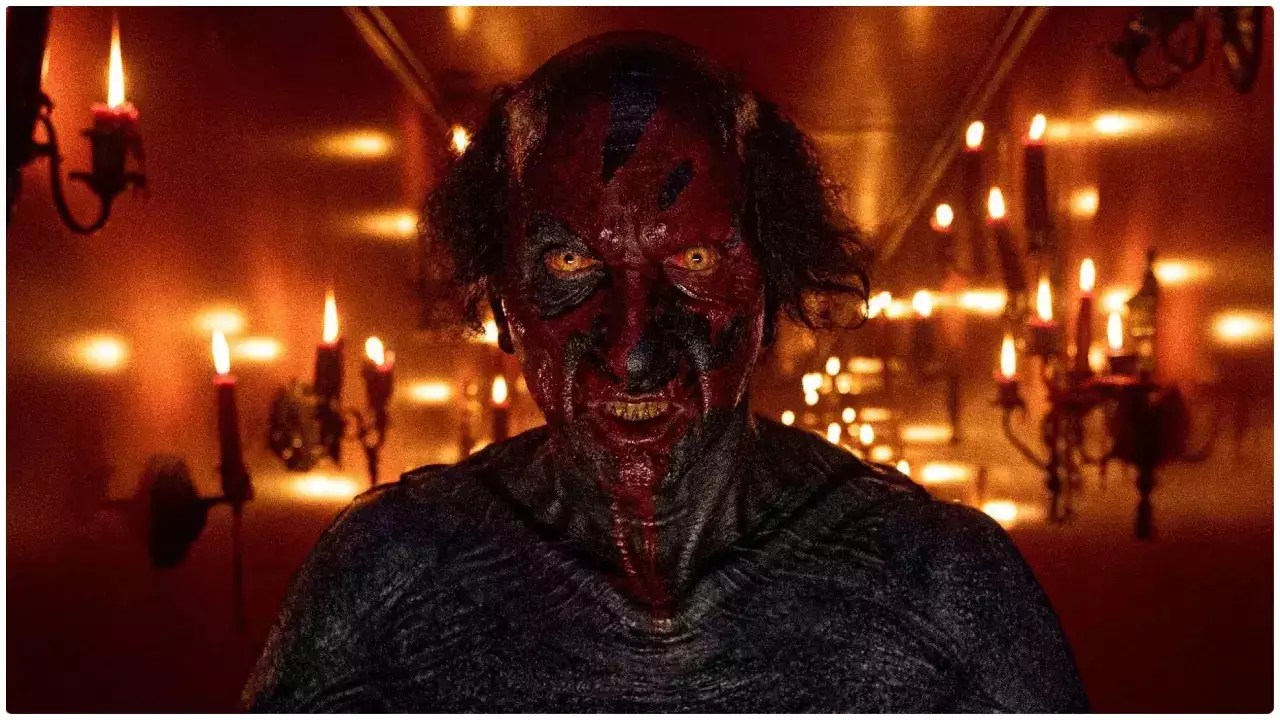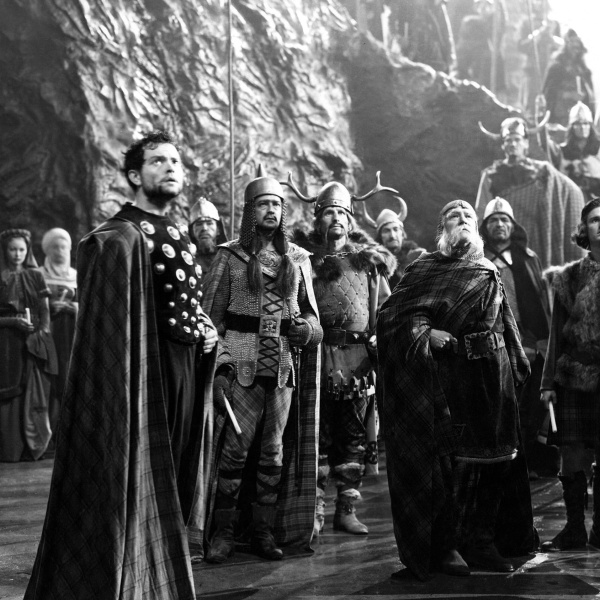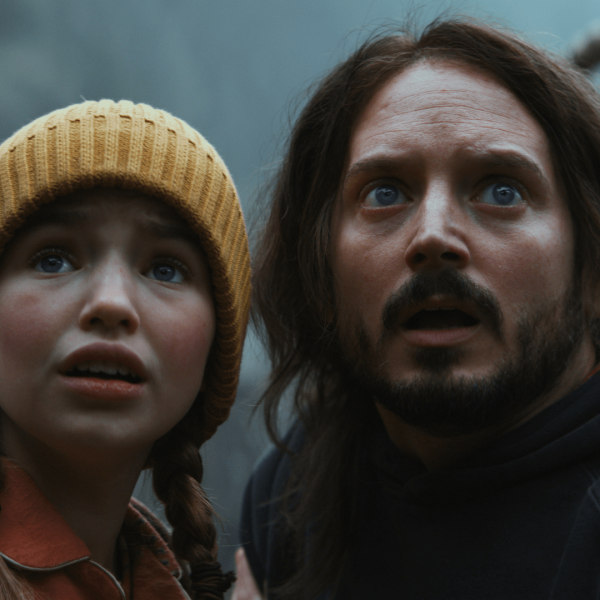For a movie so transparently intended to tie up the loose ends of a long-frayed horror franchise that’s only put out prequels for the last 10 years, “Insidious: The Red Door” is a surprisingly accessible introduction to the Lambert family and their unfortunate history of demonic possession. This jolt-happy July programmer might be as dull and rusty as a nail in the coffin could possibly get without breaking apart, but “Insidious” newcomers should rest assured that they’ll be able to follow along with their friends’ exasperation (besides, with a spin-off called “Thread” already in pre-production, it’s not like anyone should expect this property to stay dead for long).
One reason you should be able to jump in easily enough: the film starts with young Dalton (Ty Simpkins) and his dad Josh (Patrick Wilson) being hypnotized to forget everything that happened in “Insidious” and “Insidious: Chapter 2,” which effectively puts them on the same page as most of the people in the audience. For another thing, Scott Teems’ script — somehow even thinner than the line separating our world from the monster-filled hellscape that Dalton and Josh access through astral projection, or that it uses to access them — thoroughly flattens the series’ not-so-complicated backstory about “the Further” and Josh’s own childhood. It becomes a flimsy pretense to mass produce the genre’s most overfamiliar tropes about inherited trauma on an assembly line of ultra-telegraphed jump-scares.
All the same, that choice to double down on the franchise’s underlying drama may have been what inspired Wilson to step behind the camera and direct “The Red Door” himself. A classically trained actor who broke through with HBO’s “Angels in America” after an acclaimed stint on Broadway and once made a living as indie cinema’s most unsettled suburban DILF, Wilson has since re-committed himself to a rich career of unrepentant (if impressively varied) schlock. While there used to be a “Little Children” or a “Young Adult” mixed in alongside “The Ledge,” “The Conjuring,” and “Home Sweet Hell,” these days it’s all “Midway,” “Moonfall,” and whatever it is that James Wan might be working on next (all hail King Orm!).
So while it’s pure speculation to suggest that Wilson saw the character-driven conflict behind “The Red Door” as a chance to combine his training with his tastes, it’s like I always say: You can take the boy out of Carnegie Mellon’s Drama program, but you can’t take Carnegie Mellon’s Drama program out of the boy. Indeed, the first act of Wilson’s directorial debut feels more like a hard-nosed grief drama — or at least an Ari Aster movie — than it does the fifth installment of a horror franchise about red-faced demons playing peek-a-boo with Rose Byrne.
Set a decade after the events of “Insidious: Chapter 2,” the story begins with the Lambert family on the verge of unraveling. It seems that repressing a legacy of supernatural nightmares under a single mega-session of hypnotherapy may not have been the best idea, because Josh and his wife (Byrne, dutifully appearing for a few crucial minutes of screentime) have since gotten divorced, and he and Dalton have grown estranged because of the shared brain fog between them. Driving the 18-year-old Dalton seems like Josh’s last chance to salvage their relationship, and — over the course of the movie’s tense but shockingly jolt-free opening half-hour — it’s a chance he blows in heartbreaking fashion.
Simpkins plays Dalton as a non-character so vacant it’s hard to tell if he’s haunted or lobotomized, but there’s real pathos behind Josh’s failure to communicate with his son, and the patience Wilson displays with these scenes reflects a deeper interest in what’s really terrifying these people. Sinclair Daniel brings so much pep to her part as Dalton’s roommate that a comedy seems liable to break out any minute, and if not for the mud-brown cinematography that makes every scene look somewhat diseased (for some reason a staple of low-budget studio horror these days), you might almost forget that you’re watching a Blumhouse joint.
The swirling violins and sudden bangs don’t start until Dalton attends a dopey art class taught by Hiam Abbass, who encourages her students to draw from their subconscious. From that point on, neither of the Lambert men can make it five minutes without astral projecting, as the shared experience brings them closer together even as those pesky demons threaten to tear them apart forever. From the moment Josh is in danger, “The Red Door” is overwhelmed by the feeling that it’s Wilson who’s just trying to get out of this thing alive.
Teems’ script leans hard into the Further as a metaphor for the physical manifestation of mental trauma (and the need to address that trauma head-on rather than wish it away), but “The Red Door” has zero interest in unpacking the monsters beyond that. It’s bad enough that the Further is basically just a blue camera gel and a metric ton of dry ice, and worse still that the various ghouls who call it home are reduced to interchangeable non-entities without any real wants of their own. Aside from the ghost of Josh’s father and the dead frat boy who can’t stop projectile vomiting into the toilet even from the spirit world, none of the evil phantoms even get assigned a specific identity.
That puts a lot of pressure — way too much — on the horror those phantoms might be able to produce, and though Wilson clearly paid attention to what his directors were doing on the previous “Insidious” movies, the rookie helmer lacks the chops to save this installment with jolts alone. Louder than it is scary, “The Red Door” fumbles its way from one predictable jump to the next, with the setpieces ranging from moderately clever (the MRI sequence plays) to enervatingly flat (a home invasion sequence that apes “It Follows” to negligible effect). By the time Wilson reaches the home stretch he’s running so low on fresh ideas that the movie’s climax offers all the thrill of watching people run around the haunted house at a local carnival.
The generically (and decidedly PG-13) rent–a-scare horror elements interfere with what “The Red Door” really wants to do, which is to help Josh put an end to the pain cycle that he’s at risk of passing down to his kid. Spread thin between that father-son drama and the jolts intended to galvanize it, Wilson’s creaky debut underdelivers on both. Art is the door to the mind, Dalton’s teacher insists, but this one never opens wide enough to let anything memorable in — or out.
Grade: C-
“Insidious: The Red Door” is now playing in theaters.






